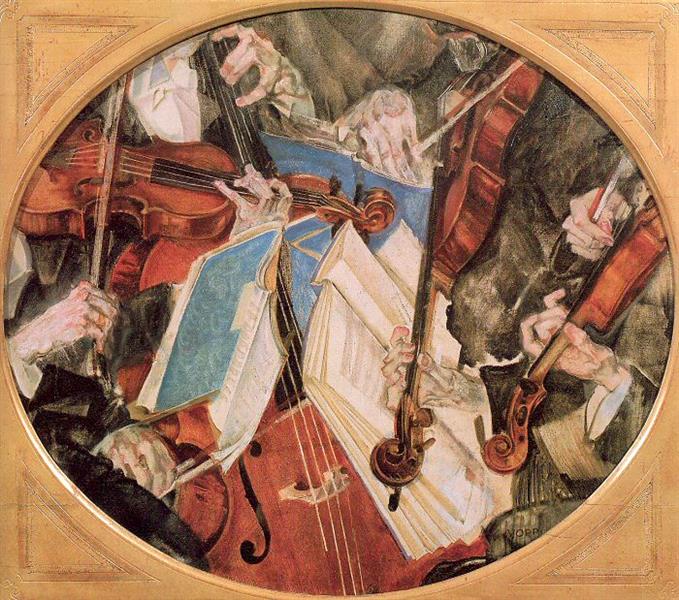Description
The painting "The Klinger Quartet", created in 1916 by Max Oppenheimer, is located at a significant moment in art history, where trends such as expressionism and modernism were in full effervescence. Oppenheimer, a Viennese artist who merged influences of modern art with a solid academic formation, offers us with this work an energetic and deeply introspective representation of human experience through music, a recurring theme in his work.
In the center of "The Klinger Quartet" we find a composition in which four musicians are arranged in an intimate environment that seems to vibrate with the source of music. Although the faces of the characters have a certain stylization and abstraction, they are capable of transmitting a range of emotions that range between joy and melancholy. The tension and connection between the musicians are palpable, which suggests that music is not only a mere background, but a character more who participates in the paint drama.
The choice of color is particularly notable; Oppenheimer uses a rich and varied palette that goes from earthly tones to more vibrant nuances, creating an environment that is both cozy and disturbing. This contrast of colors brings depth to the work and emphasizes the duality of the musical experience: the tradition, nobility and serenity that music evokes in the face of the emotional agitation that it can cause. Shadows and lights are used with mastery to model the figures and create a sense of space, wrapping the viewer on the scene.
The use of perspective is equally intriguing. Oppenheimer opts for a heterogeneous disposition that suggests an almost corporeal closeness among musicians, while inviting the viewer to participate emotionally at the time. The idea that they are trapped in their sound world is palpable, a world where time seems to stop and external concerns fader. This sense of introspection reveals a connection between art and life, a characteristic feature in Oppenheimer's work.
Max Oppenheimer, often known by his expressionist style and his ability to encapsulate complex human emotions, achieves in "The Klinger Quartet" a work that, although carried out in a specific historical context, transcends his time. The influences of others masters, As Egon Schiele, they are evident in the way Oppenheimer addresses the human figure and psychological portrait, highlighting the vulnerability and intensity of experience.
The relationship between music and painting is an issue that has fascinated many artists, and Oppenheimer addresses it in a way that contributes to this dialogue. The work not only celebrates the importance of music in cultural and emotional life, but also poses questions about the connection between art and feelings. By inviting viewers to reflect on the act of listening and feeling, "the Klinger quartet" becomes a testimony of the interconnection of human experiences, a vivid reminder that art, in all its forms, is a vehicle for Emotion and communication.
In conclusion, "the Klinger Quartet" is a work that stands out for its emotional complexity and its refined execution. Through Oppenheimer's ability, we are witnesses of a visual symphony that resonates with the universality of human experience, a legacy that continues to be relevant in the exploration of contemporary art.
KUADROS ©, a famous paint on your wall.
Hand-made oil painting reproductions, with the quality of professional artists and the distinctive seal of KUADROS ©.
Art reproduction service with satisfaction guarantee. If you are not completely satisfied with the replica of your painting, we refund your money 100%.

